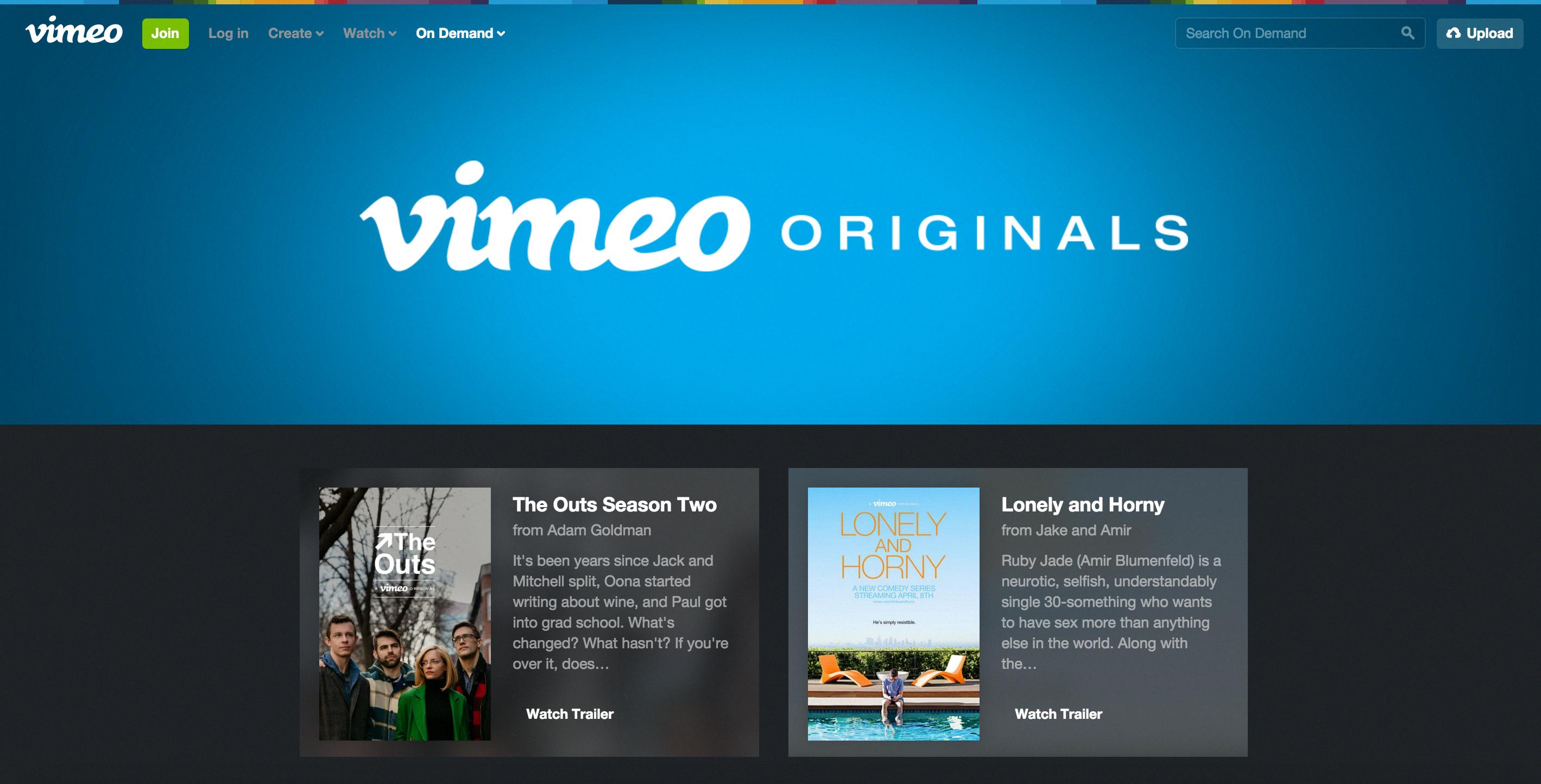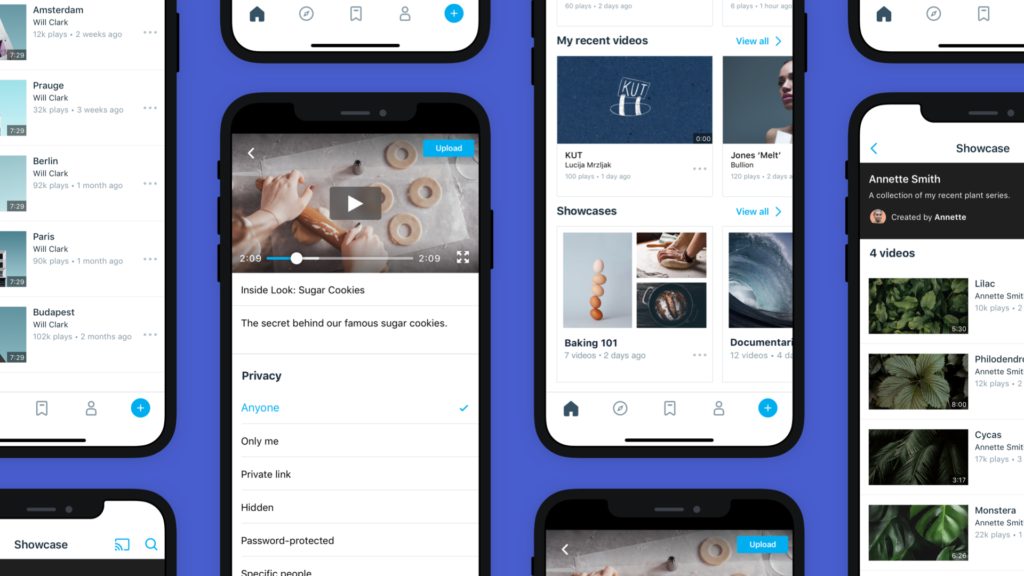Vimeo Pro is an excellent platform for creators who want to showcase their work to a wider audience. With its range of features and customization options, Vimeo Pro is a great choice for professionals who want to make their mark in the digital world. However, one of the most common questions that we get asked is whether Vimeo Pro allows copyrighted music. In this blog post, we’ll take a closer look at Vimeo Pro and answer this question.
Firstly, it’s important to note that Vimeo Pro is a paid service that offers a range of features that are specifically designed for businesses and professionals. These features include customizable video players, advanced analytics, and the ability to sell videos directly on your Vimeo page. With Vimeo Pro, you can also upload videos in 4K Ultra HD quality, making it an excellent choice for thse who want to showcase their work in the best possible way.
Now, let’s get to the question of copyrighted music. Vimeo Pro takes copyright very seriously, and it’s important to understand that using copyrighted music without permission is illegal. If you want to use copyrighted music in your videos, you must obtain the necessary licenses and permissions from the owner of the music. This is where things can get a little bit tricky, as there are usually multiple owners of the music, including the composer, publisher, and record label.
Thankfully, Vimeo Pro offers a range of solutions to help you navigate the world of music licensing. Firstly, if you use Vimeo Create to make your video, you can choose from a library of commercially licensed music. This means that you can use the music in your videos without having to worry about copyright issues, as the music has already been cleared for use.
However, if you want to use specific copyrighted music that is not included in Vimeo Create, you’ll need to obtain the necessary licenses and permissions. This can be a complex process, but Vimeo Pro offers a range of resources to help you through it. For example, Vimeo Pro has partnered with music licensing platform Musicbed, which allows users to license music directly from the platform.
Vimeo Pro is an excellent platform for professionals who want to showcase their work to a wider audience. While it’s important to be careful with copyrighted music, Vimeo Pro offers a range of solutions to help you navigate the world of music licensing. Whether you choose to use commercially licensed music from Vimeo Create or obtain the necessary licenses and permissions, Vimeo Pro makes it easy to create high-quality videos that are both engaging and legally compliant.
Using Music in Vimeo Videos
You can use music in your Vimeo video, but it’s important to ensure that you have the legal right to use the music. There are two main ways to obtain the legal right to use music in your video:
1. Create your own music: If you’re musically inclined, you can create your own music and use it in your Vimeo video. This ensures that you own the copyright to the music and can use it without worrying about infringing on someone else’s rights.
2. Obtain licenses: If you want to use a song that someone else has created, you’ll need to obtain the necessary licenses. This can include a synchronization license, which alows you to use the music in sync with your video, and a mechanical license, which allows you to reproduce and distribute the music.
Fortunately, Vimeo offers a library of commercially licensed music through Vimeo Create. This means that you can choose from a selection of music that has already been licensed for commercial use, making the process of finding legal music for your video much easier. Just be sure to double-check the terms of the license to ensure that you’re using the music appropriately.

Source: techcrunch.com
Does Vimeo Enforce Copyright Strikes?
Vimeo does issue copyright strikes if a video in your account is removed due to a DMCA takedown notice. A copyright strike is recorded against your account as part of Vimeo’s Repeat Infringer Policy. This policy is designed to keep track of users who repeatedly violate copyright laws and take appropriate action, such as suspending or terminating their accounts. It is important to note that the best way to avoid copyright strikes on Vimeo is to ensure that all content uploaded to your account is either original or properly licensed to avoid infringing on the rights of others.
Avoiding Copyright Infringement on Vimeo
Avoiding copyright claims on Vimeo is essential if you want to keep your account in good standing and avoid legal issues. The best way to do this is to be extremely careful with the videos you upload. Here are some tips for avoiding copyright claims on Vimeo:
1. Use only your original content or content that you have the necessary rights and permissions for. This includes any music, images, and videos you use in your videos.
2. Make sure to obtain all the necessary licenses for any music you use in your videos. This may require paying for a license or using royalty-free music.
3. If you do use copyrighted material, make sure that it falls under fair use guidelines. This generally means using the material for educational or journalistic purposes, or for commentary or criticism.
4. Be aware of any trademarks or logos that appear in your videos. Avoid using them without permission, as this can also lead to copyright claims.
5. Consider using Vimeo’s music library, which includes a wide variety of tracks that you can use without worrying abot copyright issues.
By following these guidelines and being mindful of the content you use in your videos, you can avoid copyright claims on Vimeo and keep your account in good standing.
Using Copyrighted Music Legally in Videos
If you want to use copyrighted music in your video legally, you need to obtain permission from the owner of the music rights. The owner of music rights is usually the publisher and record label, so you will need to get permission from both of them.
To obtain permission, you will need to get a synchronization or sync license from the publisher or composer. This license grants you the right to use the copyrighted music in your video. You can get this license by contacting the publisher or composer and negotiating the terms of the agreement, including how long you can use the music and how much you will need to pay for the license.
It’s important to note that using copyrighted music withut permission can result in legal action against you, including fines and possible removal of your video. Therefore, it’s crucial to obtain permission before including any copyrighted music in your video. Alternatively, you can also use royalty-free music, which is music that is free to use without permission or payment.
The Risk of Using Copyrighted Music in Videos
Using copyrighted music in your video witout permission or proper licensing could potentially result in your video being taken down. Copyright laws are in place to protect the rights of the original creators and owners of the music. If they find that their music has been used without permission, they can request the video to be taken down or even pursue legal action.
However, there are certain situations where you may be able to use copyrighted music in your video without it being taken down. If you obtain permission from the original creator or owner of the music, you can use it in your video legally. Additionally, some music may be licensed under Creative Commons, which allows for certain types of use without permission.
It’s important to note that even if your video is not taken down, using copyrighted music without permission can still result in consequences. For example, if you monetize your video with copyrighted music, the revenue may go to the original creator instead of you.
Using copyrighted music in your video without permission or proper licensing may result in your video being taken down. It’s important to obtain permission or use music that is licensed under Creative Commons to avoid any legal issues.

Using Copyrighted Music as Background Music
The use of copyrighted music as background in your video wthout obtaining permission could potentially make you liable for copyright infringement. Copyright laws protect owners’ rights over their creative works, including music. The copyright owner has the exclusive right to reproduce, distribute, and perform their work, including the use of their music as background in videos. If you use copyrighted music without permission, you risk being sued for damages, which could result in expensive legal fees and damages. Therefore, it is crucial to obtain permission from the copyright owner or use music that is in the public domain or licensed under a Creative Commons license.
The Relaxed Copyright Policies of Vimeo
Vimeo is generally considered to be less strict on copyright than other video sharing platforms such as YouTube. However, it’s important to note that this does not mean that you can use copyrighted material without permission on Vimeo. While Vimeo may not disable your content immediately, it is still considered stealing if you do not own the rights to any media in your video. Therefore, it’s important to always ensure that you have the proper permissions and licenses before uploading any copyrighted material to Vimeo or any other platform. Additionally, it’s always a good idea to familiarize yurself with each platform’s specific copyright policies to avoid any potential legal issues.
Consequences of Receiving a Copyright Strike
A copyright strike is a notice issued by a copyright owner or thir agent that alleges the unauthorized use of copyrighted material. While receiving a copyright strike on a platform like YouTube or Twitch can result in penalties such as a channel suspension or removal of content, it is not typically a criminal offense that would result in jail time. However, if an individual willfully and knowingly violates copyright laws for commercial gain, such as selling pirated DVDs, they could potentially face criminal charges and a maximum penalty of up to 5 years in prison. It’s important to note that copyright laws vary by country, so penalties may differ depending on where the violation occurred.
Using Copyrighted Music in YouTube Videos
Youtubers can use copyrighted music in their videos by obtaining a license or permission from the original creator or copyright holder. They can either purchase a license directly from the artist or through a music licensing company. Some artists also offer their music for free through Creative Commons licenses, which allows Youtubers to use the music as long as they give credit to the creator. Additionally, Youtubers can use music from YouTube’s Audio Library, which provdes a selection of free music and sound effects that can be used in videos without copyright issues. However, it’s important to note that using copyrighted music without permission can lead to copyright strikes, demonetization, or even legal action, so Youtubers should always make sure to obtain the necessary permissions before using copyrighted music in their videos.

Source: videomaker.com
Avoiding Copyright Infringement Without Permission
Avoiding copyright infringement is crucial to protect yourself from legal consequences and financial liabilities. Here are some steps you can take to avoid copyright infringement without permission:
1. Do not copy anything: The easiest way to avoid copyright infringement is not to copy anyhing that belongs to someone else without their permission.
2. Avoid non-virgin development: Non-virgin development refers to using pre-existing software or technology that is already protected by copyright. To avoid this, create your own technology from scratch or use open-source software that has no copyright restrictions.
3. Avoid access to prior design work: If you have access to prior design work, be careful not to copy it or use it as inspiration for your work without permission. Instead, create original designs.
4. Document right to use: If you do have permission to use someone else’s work, make sure you have documented proof of that permission. This can be in the form of a written agreement or email correspondence.
5. Negotiate for enhanced warranty and indemnity clauses: When using licensed materials, negotiate for enhanced warranty and indemnity clauses. This can provide additional protection if you are sued for copyright infringement.
6. Document your own work: Keep detailed records of your own work, including drafts, sketches, and revisions. This can help you defend against accusations of copyright infringement and prove that your work is original.
By following these steps, you can protect yourself from copyright infringement claims and ensure that your work is original and legally protected.
Avoiding Copyright Infringement Legally
To avoid copyright infringement legally, there are several steps you can take:
1. Obtain permission: If you want to use someone else’s copyrighted work, you need to obtain permission from the copyright owner or their agent. This may require payment of licensing fees.
2. Use public domain works: Public domain works are not subject to copyright protection and can be used freely. This includes works that are no longer protected by copyright, such as works created before 1925.
3. Use works with a Creative Commons license: Creative Commons licenses allow creators to share their work with others while retaining some rights. There are several types of Creative Commons licenses, so make sure you understand the terms of the license before using the work.
4. Use works undr fair use: Fair use allows for limited use of copyrighted material without permission for purposes such as commentary, criticism, news reporting, teaching, scholarship, or research. However, fair use is a complex legal concept, and you should consult a lawyer before relying on it.
5. Create original works: The best way to avoid copyright infringement is to create original works. This means that you own the copyright in the work and can control how it is used. Make sure to register your copyrights to strengthen your legal rights.
Obtaining Permission to Avoid Copyright
To avoid copyright infringement, you need to obtain permission from the copyright owner before reusing their work. The first step is to determine if the work is covered by full copyright, as not all works are protected. Once you have identified the copyright owner, you need to contact them to negotiate the terms of use. This may involve paying a fee or agreeing to crtain conditions, such as giving credit to the original author. It’s important to obtain a signed copyright permission form that outlines the terms of use agreed upon by both parties. This form should be saved for future reference, as it serves as legal proof of permission to use the work. It’s important to note that using copyrighted material without permission can result in legal consequences, so it’s best to always obtain permission to avoid any issues.
Using Copyrighted Music with Proper Credit
Giving credit to the owner of a copyrighted music won’t automatically give you the right to use it. Simply acknowledging the owner or creator of a work doesn’t automatically make your use of their material fair use. Copyright law provides the owner exclusive rights to control the use of their work, including the right to decide who can use it and under what conditions. Therefore, if you want to use copyrighted music, you need to obtain permission from the copyright owner or license the music trough a music licensing agency. Otherwise, using copyrighted music without permission or license could result in legal consequences, such as fines and lawsuits for copyright infringement.

Source: apps.apple.com
Posting Videos with Music Without Copyright Infringement
There are a few ways to post a video with music without violating copyright laws.
Firstly, you can use royalty-free music or music that is licensed under a Creative Commons license. These types of music can be used without permission from the copyright owner or paying any fees, but it’s important to check the specific terms of the license to ensure you’re following the rules.
Another option is to obtain permission from the copyright owner to use their music in your video. This can be done by contacting the copyright owner directly or through a licensing agency. You may need to pay a fee or agree to certain terms in order to use the music legally.
Lastly, you can use music that falls under the “fair use” doctrine, which allows limited use of copyrighted material for purposes such as criticism, commentary, news reporting, teaching, scholarship, or research. However, the rules for fair use are complex and can be difficult to navigate, so it’s best to consult a lawyer if you’re unsure about whether your use of the music falls under fair use.
Regardless of the method you choose, it’s important to always give credit to the original artist and source of the music in your video description and to ensure that your use of the music complies with copyright laws.
How Much Copyrighted Music Can I Use?
There is no set number of seconds that you can use of copyrighted music without infringing on the owner’s rights. The amount of music that you can use without permission will depend on varous factors, including the purpose of your use, the nature of the copyrighted work, the amount of the work you want to use, and the potential impact of your use on the market value of the original work.
In general, the less of the copyrighted work you use, the more likely your use will be considered fair use, which is a legal doctrine that allows limited use of copyrighted material without permission for purposes such as commentary, criticism, news reporting, teaching, scholarship, or research. However, fair use is a flexible and fact-specific concept that requires a case-by-case analysis, and there is no bright-line rule as to how much you can use without infringing on the owner’s rights.
As a best practice, you should try to use only the amount of music that is necessary to achieve your purpose, and you should consider seeking permission or a license from the owner for any significant use of copyrighted music. Failing to obtain permission or a license could result in legal liability for copyright infringement.
Conclusion
Vimeo Pro is an excellent video hosting platform that provids a wide range of features to help you showcase your videos professionally. With advanced privacy settings, customizable video players, and customizable portfolios, Vimeo Pro is the perfect solution for businesses, organizations, and individuals who want to present their videos in a professional manner. Additionally, Vimeo Pro also offers a vast library of commercially licensed music that can be used in your videos, provided you have the appropriate permissions. Vimeo Pro is a reliable and versatile platform that provides its users with the tools they need to create, manage and showcase their videos in the best possible way.
